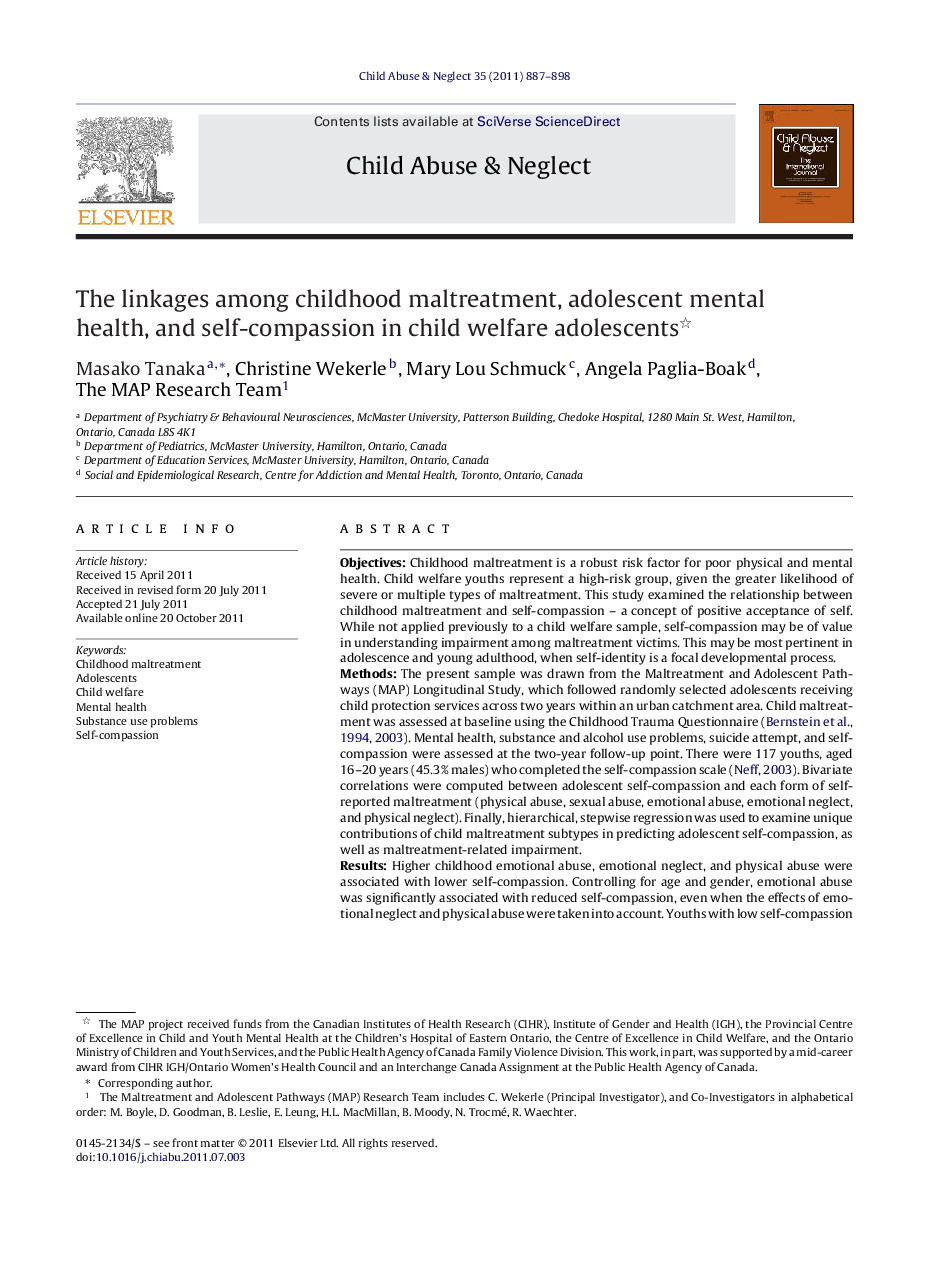| کد مقاله | کد نشریه | سال انتشار | مقاله انگلیسی | نسخه تمام متن |
|---|---|---|---|---|
| 344817 | 617456 | 2011 | 12 صفحه PDF | دانلود رایگان |

ObjectivesChildhood maltreatment is a robust risk factor for poor physical and mental health. Child welfare youths represent a high-risk group, given the greater likelihood of severe or multiple types of maltreatment. This study examined the relationship between childhood maltreatment and self-compassion – a concept of positive acceptance of self. While not applied previously to a child welfare sample, self-compassion may be of value in understanding impairment among maltreatment victims. This may be most pertinent in adolescence and young adulthood, when self-identity is a focal developmental process.MethodsThe present sample was drawn from the Maltreatment and Adolescent Pathways (MAP) Longitudinal Study, which followed randomly selected adolescents receiving child protection services across two years within an urban catchment area. Child maltreatment was assessed at baseline using the Childhood Trauma Questionnaire (Bernstein et al., 1994 and Bernstein et al., 2003). Mental health, substance and alcohol use problems, suicide attempt, and self-compassion were assessed at the two-year follow-up point. There were 117 youths, aged 16–20 years (45.3% males) who completed the self-compassion scale (Neff, 2003). Bivariate correlations were computed between adolescent self-compassion and each form of self-reported maltreatment (physical abuse, sexual abuse, emotional abuse, emotional neglect, and physical neglect). Finally, hierarchical, stepwise regression was used to examine unique contributions of child maltreatment subtypes in predicting adolescent self-compassion, as well as maltreatment-related impairment.ResultsHigher childhood emotional abuse, emotional neglect, and physical abuse were associated with lower self-compassion. Controlling for age and gender, emotional abuse was significantly associated with reduced self-compassion, even when the effects of emotional neglect and physical abuse were taken into account. Youths with low self-compassion were more likely to have psychological distress, problem alcohol use, and report a serious suicide attempt, as compared with those with high self-compassion. A number of maltreatment-related areas of impairment, identified by screening instruments, were significantly associated with lower self-compassion.ConclusionSelf-compassion may be a fruitful aspect of research to pursue in an effort to better understand the impact of childhood emotional abuse on adolescent functioning, particularly considering the under-researched group of those receiving child protective services.
Journal: Child Abuse & Neglect - Volume 35, Issue 10, October 2011, Pages 887–898